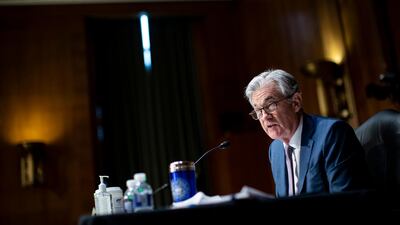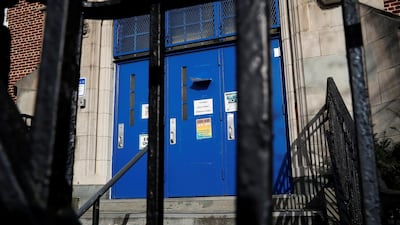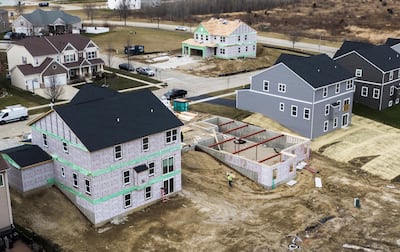US Federal Reserve chairman Jerome Powell sounded the most optimistic he’s been since the coronavirus crisis began in March, while pledging that the central bank will keep providing the economy with plenty of support well into the future.
Speaking to reporters on Wednesday after the Fed’s last policymaking meeting of a tumultuous year, Mr Powell said he expects the economy to perform “strongly” in the second half of 2021 as more and more Americans are vaccinated against the virus – though he cautioned that the next few months would be “challenging” until that occurs.
“We can kind of see the light at the end of the tunnel,” Mr Powell said. “We’re thinking that this could be another long expansion.”
The more optimistic tone caps a year in which the Fed went to extraordinary lengths to combat the deepest decline in the economy since the Great Depression, cutting interest rates effectively to zero and unlocking what Mr Powell has estimated is almost $2 trillion of funding for businesses, and state and local governments through emergency lending facilities.
It’s also bought trillions of dollars of Treasury and mortgage-backed debt, depressing interest-rate costs for the federal government, home buyers and other borrowers.
Policymakers on Wednesday voted to maintain monthly bond purchases of at least $120 billion until they see “substantial further progress” in reducing unemployment and increasing inflation. Some market analysts took that to mean continued support, at that pace, into 2022.
Mr Powell called the new language on asset purchases “powerful,” but declined to specifically define what inflation level and unemployment rates would trigger a future change in the buying campaign.
He did though make clear that the Fed would be in no hurry to pull back on the massive stimulus it is providing to the economy as growth picks up.
“Powell was pretty upbeat about the outlook especially for the second half of next year with a rather-bullish assumption of herd immunity by midyear with the vaccines,” said Thomas Costerg, senior US economist at Pictet Wealth Management in Geneva. “But the monetary-policy communication remains still very dovish – and even more dovish when juxtaposed to this rather upbeat macro outlook.”
Upgraded Forecasts
Federal Open Market Committee policymakers upgraded their forecasts for economic growth in 2021 and 2022, to a median projection of 4.2 per cent and 3.2 per cent, respectively. But officials signalled they continue to expect to hold the federal funds rate near zero at least through 2023.
“We’re going to keep policy highly accommodative until the expansion is well down the tracks,” Mr Powell said.
The Fed chair welcomed steps in Congress to put together another relief package for households and businesses hard hit by the fallout from the coronavirus crisis, saying that was the best way to build a bridge for the economy to the better times he sees ahead.
“The ongoing surge in new Covid-19 cases, both here in the US and abroad, is particularly concerning,” he said. “It looks like a time when what is really needed is fiscal policy and that’s why it is a very positive thing that we’re getting that.”
Fiscal Aid
Congressional leaders are discussing a package worth almost $900bn that would include a new round of stimulus payments to individuals and enhanced federal unemployment benefits.
Mr Powell played down concerns that the Fed’s ultra-easy monetary stance would spark an unwanted burst of inflation, saying that there were powerful global forces holding it down. If inflation does rise as more Americans are vaccinated and the economy opens up, that’s likely to prove temporary, he said.
He also evinced limited concern that super low interest rates would lead to bubbles in the stock and financial markets, though he did allow that “asset prices are a little high.”
Fuelled in part by the Fed’s very stimulative policy, stock prices have surged to record levels after cratering in March when the crisis began. And Neil Dutta, head of US economic research at Renaissance Macro Research, sees more to come.
“The Fed marked up growth in each of the next two years, marked down unemployment, and marked up core inflation. Despite this, they don’t expect to move rates. Good for risk appetite. Buy stocks,” he said.
Instead of dwelling on the potential risks of the Fed’s stance, Mr Powell repeatedly hammered home the message that policy would remain very easy to aid in the recovery he sees coming.
“Although there is light at the end of the tunnel, asset purchases are continuing for some time and the funds rate is likely to stay at zero for years,” said Jonathan Wright, an economics professor at Johns Hopkins University and a former Fed economist.












